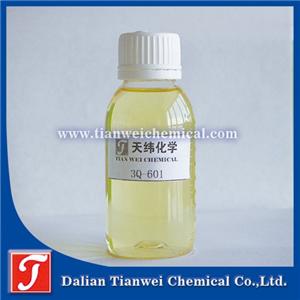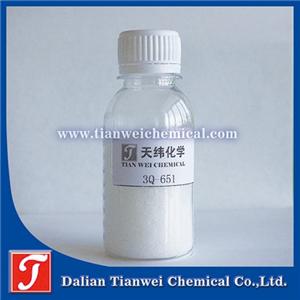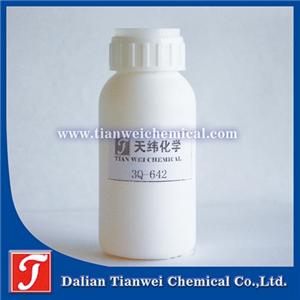The antibacterial and antifungal agent for foaming materials has a long-lasting, broad-spectrum antibacterial effect
Antibacterial and antifungal agents for foaming materials are a type of functional additive specifically designed to inhibit or kill microorganisms on the surface and inside of foaming materials. Their core function is to address the issue of microbial growth, extend the service life of materials, and ensure their safety during use. The following is an introduction from five aspects: mechanism of action, core value, type classification, application scenarios, and key points for selection:
I. Mechanism of Action: Multi-dimensional inhibition of microbial growth
Cell membrane destruction: Metal ions (such as silver and zinc) and some organic molecules penetrate the cell membrane of microorganisms, causing cytoplasmic leakage and leading to cell death.
Metabolic inhibition: Organic compounds (such as quaternary ammonium salts and pyridines) disrupt the energy production systems of microorganisms by inhibiting enzyme activity, thereby blocking their growth and reproduction.
Genetic material interference: Some components attach to the DNA/RNA of microorganisms, interfering with replication and transcription processes, fundamentally inhibiting their life cycle.
Cell wall synthesis blockade: By interfering with the synthesis of cell wall components (such as peptidoglycan), microorganisms are unable to maintain structural integrity and die.
Ii. Core Values: Addressing the three major issues caused by microbial growth
Inhibit microbial growth: The antibacterial rate against bacteria (such as Escherichia coli, Staphylococcus aureus) and molds (such as Aspergillus Niger, Penicillium) is ≥99.9%, and the anti-mold grade reaches level 0 (no visible mold growth), preventing mold and off-flavor from the source.
Extending material lifespan: Microbial metabolism can break down the high-molecular chains of foaming materials (such as ester bonds in polyurethane and carbon chains in polyolefins), leading to material embrittlement, cracking, and reduced elasticity. Antibacterial and antifungal agents can slow down this process and extend the service life.
Ensuring health and safety: Preventing health risks such as allergies and infections caused by microbial growth, especially suitable for scenarios in direct contact with the human body (such as mattresses and sofas).
Iii. Type Classification: Two major systems, inorganic and organic
Inorganic antibacterial agent
Silver ions: They have broad-spectrum antibacterial properties, good heat resistance, and high safety. However, their effectiveness against mold is relatively weak, and they tend to disperse unevenly and have poor compatibility after addition.
Zinc ions: They are highly safe, but have a relatively narrow antibacterial spectrum and are usually used in combination with other ingredients.
Organic antibacterial agent
Pyridine, thiazole and polyguanidine: They have highly efficient antibacterial and bactericidal effects on bacteria, molds and algae, have good compatibility with foaming materials and excellent weather resistance (such as no color change when used outdoors).
Quaternary ammonium salts: Heat-resistant, suitable for high-temperature environments such as car seats, but long-term use may lead to drug resistance.
Iv. Application Scenarios: Covering demands from multiple fields
Home furnishing field
Mattress and sofa sponges: Inhibit the growth of mold in damp environments to ensure sleep safety.
Children's toy foam and crawling MATS: They must meet the safety standards for mothers and infants. Food-grade zinc oxide and other non-irritating components are preferred.
Medical field
Medical foam dressings and wound filling foams: They are required to be antibacterial and have good biocompatibility. Silver-loaded antibacterial agents are commonly used (silver ions have low toxicity to human cells).
Medical equipment buffer foam: It needs to be resistant to disinfection (such as alcohol, high-temperature disinfection), and inorganic antibacterial agents with good heat resistance should be selected.
Transportation field
Automobile seat foam and interior foam: They need to be heat-resistant (exposed to direct sunlight inside the vehicle) and anti-mold (air conditioning condensate water can easily cause dampness). Commonly used antibacterial agents are zinc oxide or high-temperature resistant quaternary ammonium salts.
High-speed rail/aircraft seat foam: It must comply with public health standards, require a broad antibacterial spectrum, and commonly use silver ion composite antibacterial agents.
Food packaging field
Fresh food transportation buffer foam: Food contact grade safety is required. Zinc oxide can be selected to prevent food from getting moldy.
V. Key Points for Selection: Match according to the process and requirements
Processing temperature: The processing temperature varies greatly depending on the production process of foaming materials. It is necessary to select antibacterial agents with strong heat resistance (for example, organic antibacterial agents have better heat resistance than inorganic silver ions).
Dispersibility and compatibility: Inorganic antibacterial agents (such as silver ions) are in powder form and tend to be unevenly dispersed after addition. Therefore, types with good compatibility with materials (such as liquid organic antibacterial agents) should be selected.
Safety requirements
Human safety: Non-irritating (skin, respiratory tract), non-toxic (oral/inhalation), complies with the EU REACH regulation, the US FDA food contact standards, etc.
Environmental safety: Good biodegradability, does not cause soil/water pollution (avoid using inferior antibacterial agents containing heavy metals).
Antibacterial spectrum and efficiency
Antibacterial spectrum breadth: An ideal antibacterial agent should simultaneously combat Gram-positive bacteria, Gram-negative bacteria, and common molds, making it suitable for various scenario requirements.
Antibacterial efficiency: It has passed national standard tests (such as Chinese GB/T 21866-2008), requiring an antibacterial rate of ≥99% against bacteria and an anti-mold grade of ≥0 against mold




